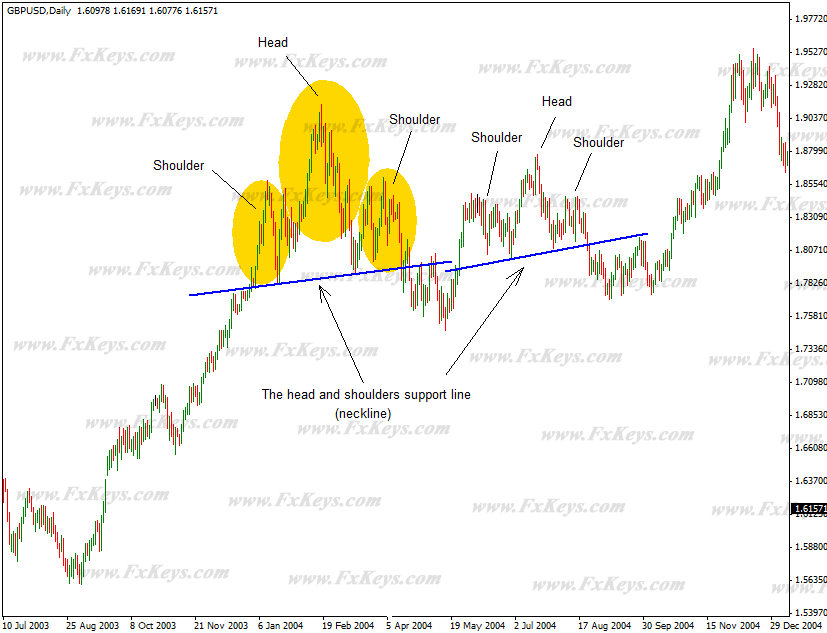Trading the Head and Shoulders Pattern
Post on: 25 Май, 2015 No Comment

The “head and shoulders” pattern is one of the better chart patterns seen in the Forex market which can be traded for good profits when it appears. This pattern works very well on currency pairs that are known to trend.
The “head and shoulders” pattern is formed by three price peaks, with the second peak (the one in the centre) rising above the one before and after it to form the head, and the first and third peaks forming the shoulders. The two shoulders do not necessarily have to be of the same height the way the human shoulders are. Indeed, for this bearish reversal chart pattern, the best results are seen when the third peak (left shoulder) is slightly lower than the other shoulder, such that a line drawn to connect the two troughs that are formed from the valley between shoulder 1 and the head and between the head and shoulder two, should slope downwards.
The snapshot below illustrates the description of this pattern given above.
How to Trade with the Head and Shoulders Pattern
Even though this pattern produces results, traders must take time to ensure that some critical steps are followed to eliminate errors.
1) The pattern must be allowed to form completely. There have been many instances of the first shoulder and the head forming, only for the evolving 2nd shoulder to transform into continued bullishness on the currency pair, completely negating the signal. A complete pattern is formed when the price retreats to the neckline, completing the 2nd shoulder.
2) The area where the price retreats from the peak of the 2nd shoulder must touch and close at the neckline or slightly below it.
3) There must be a confirmed break of the neckline in order to produce a signal to go short on the asset. This break is in the form of a candle which closes below the neckline AFTER the completion of the 2nd shoulder.
The neckline, which is the line drawn to connect the two troughs that are formed between shoulder 1 and the head, and between the head and shoulder 2, is used as the area for trade entry. The neckline is a support line, so what the trader is trading with the head and shoulders is a break of this support line.
Trade entries can be made in two ways:
1) Using a pending order which will be triggered by a confirmed break of the neckline support. The pending order used is a Sell Stop, set at about 10 pips below the neckline at at level of the 2nd shoulder.
2) If the trader wants to be more exact, he may decide to follow the price action, and once a candle has closed below the neckline as described earlier in this article, he can use a market Sell order for the trade.
3) As further confirmation, the Relative Strength Index (RSI) is used. The value must be less than 50 to show that the trend bias is a downtrend.
The exit point should be the same distance between the neckline and the head. Extrapolate this downwards to determine the number of pips this translates into, and use this as the first profit target.
If the price retreats further, wait until the price has gone below the first profit target by 15 pips, then set a trailing stop to follow the price and close out the trade if there is a reversal.














